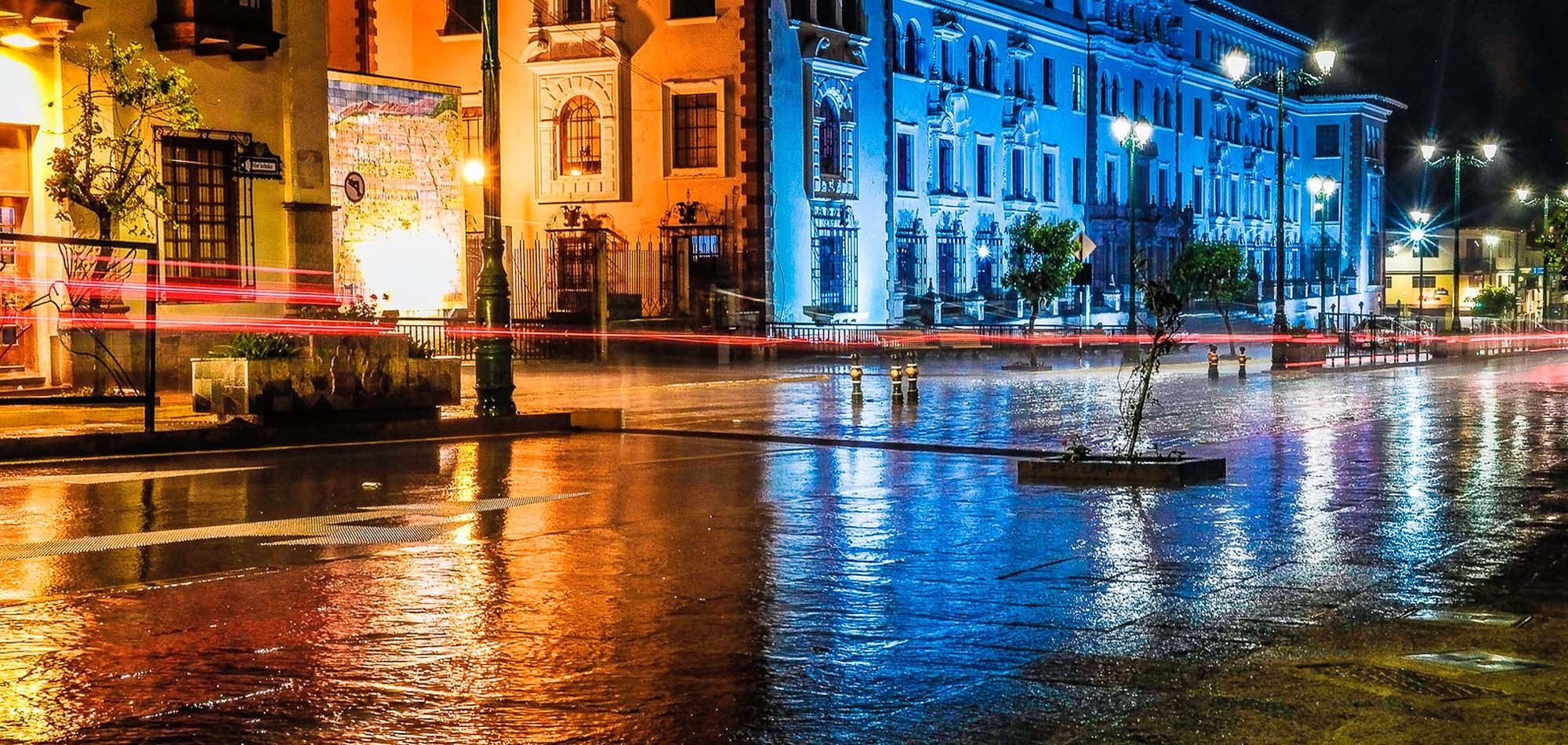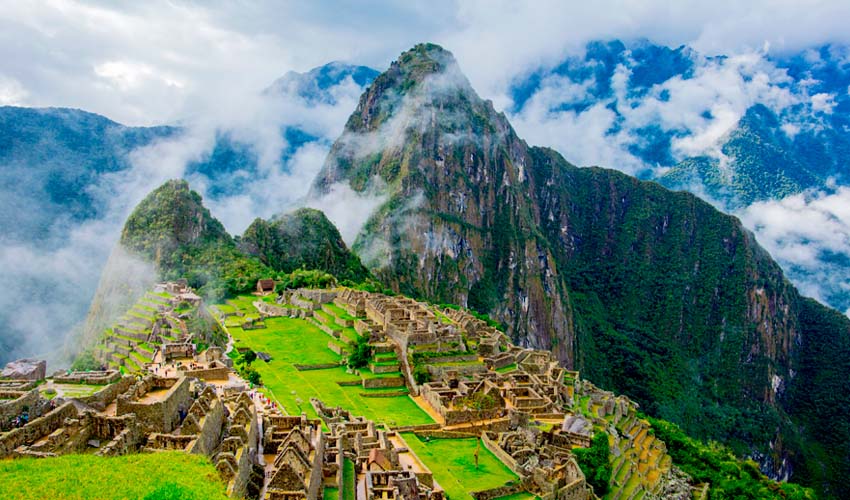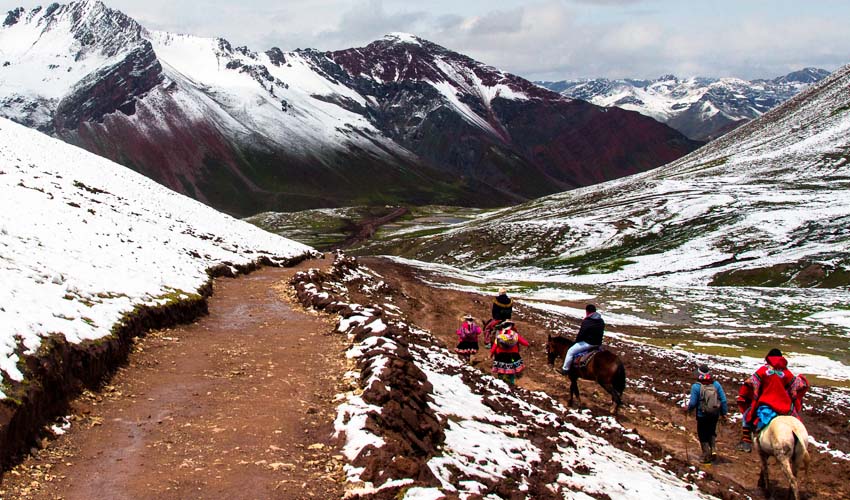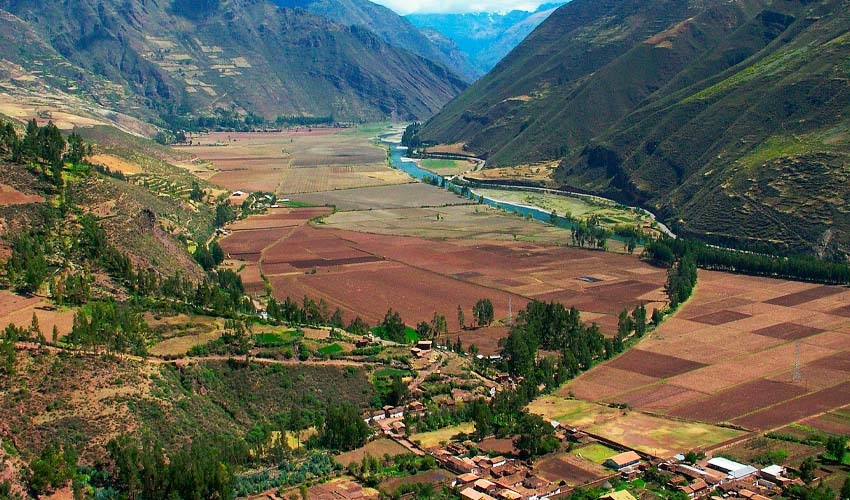
Peru is has to main seasons, mainly dry and wet season. Tourism is at a peak during dry season, specifically because of the sunny days and therefore better hiking conditions. However, this also means it is incredibly crowded and most things need to be booked months in advance, p0articu;la;lt the famous Inca Trail and Machu Picchu
Each region in Peru experiences rain differently. While some areas are with a lot of water, others might receive only a drizzle. Knowing when and where to expect rain can enhance your travel plans.
In this article, we will delve into Peru’s rainy season. Timing is key for both travelers and locals alike. Let’s explore what to anticipate during these wet months.
Rainy Season in Peru generally begins in November and ends in April or December to March. It affects various regions distinctly. Some areas experience torrential downpours, while others see lighter rain.
The Andes mountains, including Cusco, get heavy rainfall. If you are into trekking, Lares Trail planning requires caution during these months. Unexpected rain can make the trails more challenging.
Cusco, Machu Picchu, a top destination, has its challenges during the rain. Your Inca Trail essentials must include waterproof gear and sturdy shoes. Being prepared ensures a safer and more enjoyable experience.
The Amazon rainforest in Peru sees the heaviest rain. Rainy Season in Peru brings life to this biodiverse region. The rivers swell, providing a unique perspective for boat trips.
Coastal regions like Lima experience milder rain. The desert coast landscapes of the coast seldom see heavy downpours. However, light drizzles are common during these months.
Rainy Season in Peru also has its benefits. The landscapes turn lush and green. It’s a sight to behold for nature lovers and photographers.
While rain can be challenging, it revitalizes Peru’s landscapes. Proper planning can ensure a memorable trip, rain or shine. Always be prepared and enjoy the beauty of the season.

Rainy Season in Peru or the wet season varies greatly across different regions. The geographical diversity form these variances. Some places experience intense rainfall, while others remain relatively dry.
The Andean highlands receive significant rain. Here, the Short Inca Trail to Machu Picchu becomes quite challenging. The rain turns paths into slippery stretches, making treks demanding.
Rainy Season in Peru transforms the Amazon rainforest. This region receives the heaviest downpours countrywide. Rivers surge, flora thrives, and fauna becomes increasingly active.
Cusco witnesses intense rainfall too. The region’s landscape bursts into vibrant greens. This verdant scene offers a backdrop to many Peruvian Rituals and Traditions.
In contrast, the coastal regions have a milder rainy season. Cities like Trujillo experience lighter, infrequent drizzles. These drizzles barely disrupt daily activities but are still notable.
The northern highlands, including Cajamarca, also face heavy rains. Local farmers welcome this season. It revitalizes the soil and boosts crop yields.
Rainy Season in Peru brings both challenges and charm. Every region responds differently to the rains. But the beauty of nature during this time remains unparalleled.
Travelers must remain informed and prepared. Knowing the affected regions can help in planning better. And embracing the season can lead to unique experiences.
–
Surf’s up during the wet season. The waves are actually smaller and therefore perfect for beginner surfers. The north side of Peru also has its busiest tourist season at this time of the year. So you can enjoy the crowds and the decadent seafood based local cuisine.
Peruvian cuisine is by far one of the best in the world. Some of their most famous dishes are warm hearty stews like aji de gallina or parihuela. Alongside the rich stews is a great selection comforting soups that warm the soul like Sopa a la Criolla and Caldo de Gallina. The country has a unique variety of dishes based on which region of Peru they are from. Enjoy steaming bowl of comfort food with its vibrant colors and enticing textures whilst the rain rhythmic taps outside. Peruvian cuisine is an exhilarating combination of savory broths, titillating aromas of exotic spices and organic and fresh ingredients.
The Sacred Valley tour is a great day tour of the heart of Inca land. This tour usually takes place in the comfort of a private van to all the different archeological Inca sites along the valley. Gigantic mountain tops are picture perfect with blankets of snow. The weather is pleasantly warm even through the rainfall.
This cultural trek is a journey of discovery of ancient Quechua culture in Peru. During the month of February the Inca Trail is closed for maintains and the Lares Trek is the safest and best trek to get you to Machu Picchu. The glacial peaks and turquoise lakes are at their most spectacular. Best part is there are little people trail and therefore the hie feels more intimate and secluded.

Navigating the Rainy Season in Peru requires preparation. The country’s varied climate can surprise many travelers. Being prepared ensures a smooth journey.
Pack wisely:
Waterproof clothing is essential. Invest in a good quality rain jacket and umbrella. Waterproof bags protect your belongings from unexpected showers.
Footwear matters:
Sturdy, water-resistant shoes are crucial. Slippery trails can be treacherous. Good grip ensures better safety while trekking.
Stay informed:
Always check the weather forecast before traveling. Local insights can also be invaluable. Residents often provide accurate and current information.
Choose the right transportation:
During the rainy season, some roads become impassable. Opt for trains or flights for longer distances. They’re safer and more reliable.
Respect nature:
Landslides can be common in hilly areas. Always follow local advice and warnings. It’s best to avoid areas prone to such events.

Embrace the beauty:
Rain brings life to Peru’s landscapes. Lush greenery and vibrant flowers bloom everywhere. Take time to appreciate this natural spectacle.
Plan activities accordingly:
Certain outdoor activities might be challenging. Consider indoor activities or city tours during heavy rains. Museums, galleries, and cafes offer refuge and enjoyment.
Stay healthy:
Rain can bring colder temperatures. Dress warmly and avoid sudden temperature changes. Consuming hot beverages helps in staying warm.
Engage in local culture:
Rainy season has its own set of Peruvian rituals. Participate and immerse yourself. It provides a deeper understanding of local traditions.
As the season comes with its unique challenges, it also offers unparalleled experiences. The landscapes take on a fresh, rejuvenated look.
And, if you’re adventurous, consider taking the Inca Trail to Machu Picchu or a Salkantay Trek to Machu Picchu. These treks offer breathtaking views, especially during the rainy season. Don’t miss this opportunity!